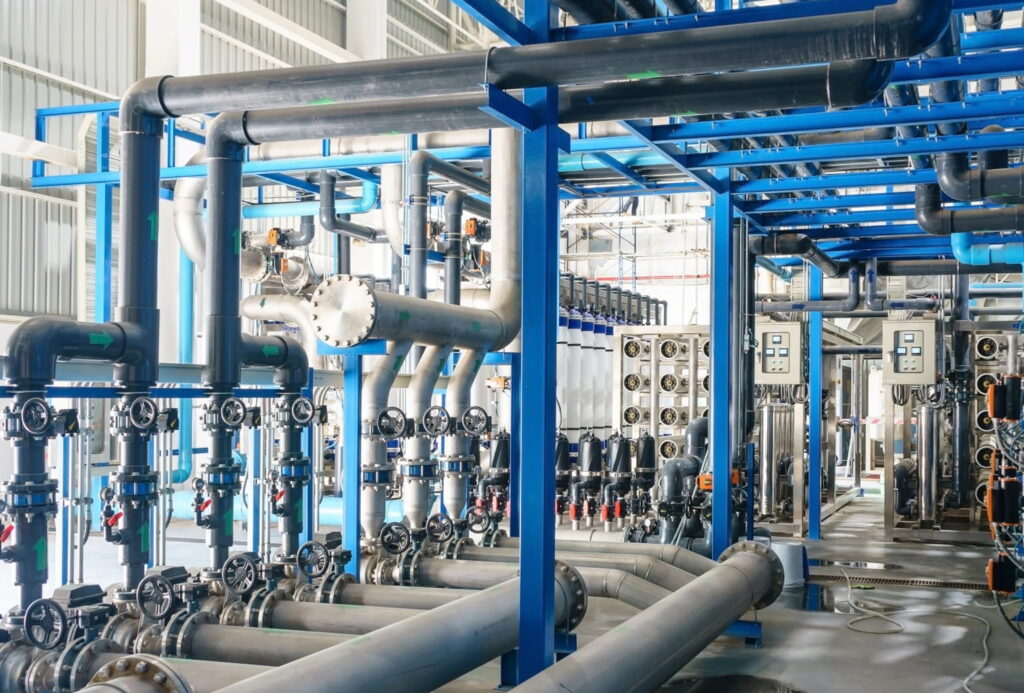In the intricate world of construction, where every detail matters, the acronym MEP stands tall as a silent yet indispensable guardian of efficiency, functionality, and comfort. MEP, which stands for Mechanical, Electrical, and Plumbing services, plays a critical role in shaping the modern built environment. In this comprehensive exploration, we will delve deep into the intricate realm of MEP services, unraveling their vital significance, and highlighting their multifaceted contributions to the construction industry.
The Foundations of MEP Services
The MEP triad comprises three distinct yet interdependent domains that collectively ensure the seamless operation of any building or facility.
Mechanical Systems
Mechanical systems encompass heating, ventilation, and air conditioning (HVAC), elevators, escalators, and fire suppression systems. These systems regulate indoor climate, provide comfortable temperatures, and ensure safety in the event of a fire.
Electrical Systems
Electrical systems govern the distribution of power throughout a building, from lighting and electrical outlets to complex machinery. They include power generation, distribution, and control systems, as well as emergency backup systems.
Plumbing Systems
Plumbing systems handle the distribution of water, sewage, and gas. This includes water supply, drainage, sewage treatment, and gas pipelines, all of which are essential for hygiene and comfort.
The Functional Backbone of Modern Buildings
Comfort and Climate Control
HVAC Systems: MEP engineers meticulously design heating, ventilation, and air conditioning systems to maintain optimal indoor temperatures, humidity levels, and air quality. This not only ensures occupant comfort but also enhances productivity and health.
Elevators and Escalators: In high-rise buildings, efficient vertical transportation is crucial. MEP experts design elevator and escalator systems for smooth operation, minimizing wait times and energy consumption.
Power Distribution and Reliability
Power Distribution: MEP professionals plan electrical systems that efficiently distribute power throughout a building, minimizing energy losses and ensuring a stable supply to all electrical equipment.
Emergency Backup: To mitigate the impact of power outages, MEP service include the installation of emergency backup systems like generators and uninterruptible power supplies (UPS), ensuring vital functions can continue uninterrupted.
Water and Sanitation
Clean Water Supply: Reliable plumbing systems deliver clean, safe water to all parts of a building, meeting the needs of occupants and supporting hygiene standards.
Sewage and Waste Management: MEP engineers design efficient sewage and waste disposal systems, ensuring the safe removal of wastewater and waste products from the building.
The Role of Sustainability in MEP Services
With environmental concerns at the forefront of modern construction, MEP services have evolved to embrace sustainability practices.
Energy Efficiency
Green Building Design: MEP professionals integrate sustainable technologies and designs, such as energy-efficient lighting, HVAC systems, and renewable energy sources like solar panels, to reduce energy consumption and carbon footprint.
Building Automation Systems: Smart building management systems optimize energy usage by controlling lighting, HVAC, and other systems based on occupancy and environmental conditions.
Water Conservation
Water-Efficient Plumbing: Low-flow fixtures, rainwater harvesting systems, and greywater recycling are integrated into plumbing designs to reduce water consumption.
Sustainable Drainage: Sustainable stormwater management practices are implemented to minimize the environmental impact of rainwater runoff.
Sustainable Materials
MEP service also extend to the selection and implementation of sustainable materials and technologies, promoting the use of eco-friendly products and practices in construction.
The Expertise of MEP Engineers
The successful execution of MEP service hinges on the expertise and collaboration of skilled engineers and professionals.
Design and Planning
Collaborative Design: MEP engineers work closely with architects and other stakeholders to ensure that MEP systems seamlessly integrate into the overall building design while meeting functional and aesthetic requirements.
Code Compliance: Adherence to local building codes and regulations is paramount, and MEP professionals ensure that all systems meet legal standards and safety requirements.
Installation and Commissioning
Precision Installation: Skilled technicians install MEP systems with precision, ensuring that each component operates as designed.
Commissioning: After installation, systems are thoroughly tested and fine-tuned to ensure optimal performance and energy efficiency.
Maintenance and Service
Ongoing Maintenance: MEP service providers offer routine maintenance to keep systems in top condition, extending their lifespan and preventing unexpected failures.
Emergency Response: In case of system failures or emergencies, MEP service providers offer 24/7 support to swiftly address issues and minimize downtime.
The Future of MEP Services
As technology advances and construction practices evolve, MEP service are poised to undergo significant transformations.
Digital Twins and Building Information Modeling (BIM)
Digital Twins: The creation of digital replicas of buildings, known as digital twins, allows for real-time monitoring, predictive maintenance, and performance optimization.
BIM Integration: BIM technology enhances collaboration and efficiency among various stakeholders, streamlining the design, construction, and operation of buildings.
Internet of Things (IoT)
IoT Sensors: The integration of IoT sensors in MEP systems enables remote monitoring and predictive maintenance, leading to improved energy efficiency and cost savings.
Smart Buildings: IoT technology facilitates the development of smart buildings that can adapt to occupant preferences and environmental conditions in real-time.
Sustainable Innovations
Carbon-Neutral Buildings: The quest for carbon-neutral buildings is driving the adoption of innovative technologies and sustainable practices in MEP Bim services.
Biophilic Design: Incorporating natural elements into building design enhances occupant well-being and reduces the environmental impact.
Conclusion
Engisoftengineering MEP services in construction have transcended their traditional roles to become essential drivers of efficiency, sustainability, and comfort. As Dubai and other global metropolises continue to grow and embrace modernity, the critical role played by MEP service cannot be overstated. From powering the climate control in skyscrapers to ensuring clean water in homes. These services are at the core of our daily lives, enriching our environments and enhancing our well-being. In a world where every detail matters, MEP continue to shine as a beacon of excellence in the construction industry, shaping a brighter, more efficient, and sustainable future for us all.
Read More ; https://foundationbacklink.org/the-role-of-mep-bim-services-in-desnig/

